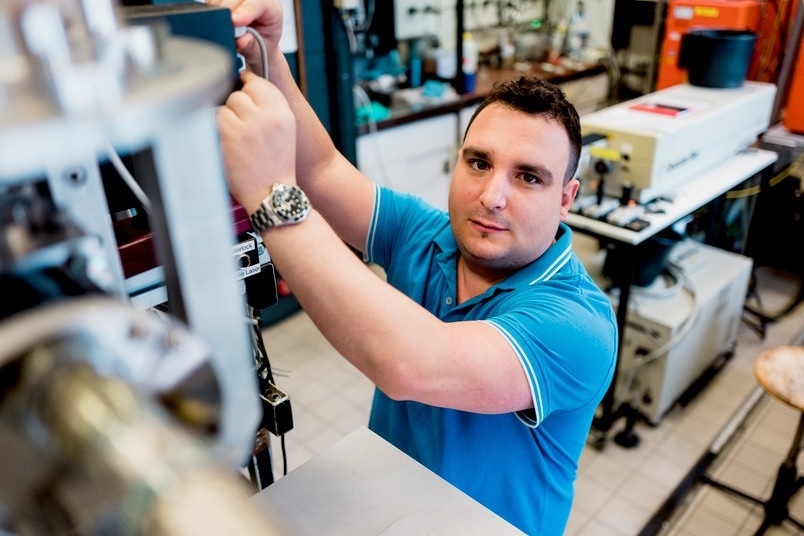Jul 31 2019
Magnets made of organic molecules are different from metallic magnets, in that they could be flexible, transparent, lightweight, or liquid. However, they are usually not stable.
 Enrique Mendez-Vega is part of the Bochum-based team producing the organic magnets. (Image credit: RUB, Kramer)
Enrique Mendez-Vega is part of the Bochum-based team producing the organic magnets. (Image credit: RUB, Kramer)
Researchers from the Ruhr Explores Solvation Cluster of Excellence at Ruhr-Universität Bochum have developed new molecules possessing magnetic properties. When compared with several previous organic magnets, the molecules were found to be stable in the presence of oxygen and water.
Their magnetic properties were maintained up to -110°C—which is comparatively warm for such compounds. On July 2nd, 2019, the researchers, under the leadership of Professor Wolfram Sander, Chair of Organic Chemistry II, in collaboration with coworkers from the Russian Academy of Sciences in Chernogolovka, reported their findings in Angewandte Chemie.
Organic magnets are capable of providing several benefits over traditional metallic magnets, for example, they could be transparent, lightweight, economical, and flexible or even liquid. Their magnetic properties can be altered through exposure to light.
However, organic magnetic molecules are often unstable. They react easily with other molecules or lose their magnetic properties when exposed to light or heat.
Wolfram Sander, Professor and Chair of Organic Chemistry II, Ruhr-Universität Bochum
Magnetism due to Unpaired Electrons
Magnetism takes place during the movement of electric charges; the phenomenon can be seen in any type of matter but with different intensity magnitudes. It is verified that arylnitrenes are potential molecules for organic magnets.
They possess two unpaired electrons with a strong magnetic interaction and are relatively easy to produce.
Enrique Mendez-Vega, Study Co-Author, Organic Chemistry II, Ruhr-Universität Bochum
The scientists tried to achieve much stronger magnetic properties by connecting many nitrenes. In the present study, they linked three nitrenes to form a trinitrene with six unpaired electrons. They achieved high yields by joining this way.
Despite the fact that the trinitrene had six unpaired electrons—a property that often makes molecules reactive—it was stable rather than reacting with hydrogen and oxygen. Even upon being enclosed in a water matrix, these molecules prevented their reactive units from combining, which could have led to the loss of their magnetic properties.
Next Goal: Stable at Room Temperature
The trinitrenes are promising candidates for the development of organic magnets as they are relatively easy to produce in larger quantities, are stable and strongly magnetic. We are now working on making them stable under normal environmental conditions, such as at room temperature.
Wolfram Sander, Professor and Chair of Organic Chemistry II, Ruhr-Universität Bochum
The study was supported by the German Research Foundation as part of the Cluster of Excellence Resolv (EXC 2033, project number 390677874).